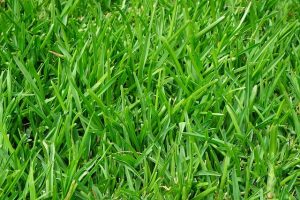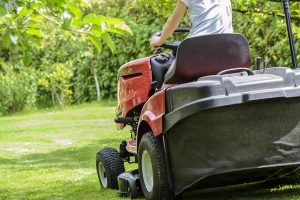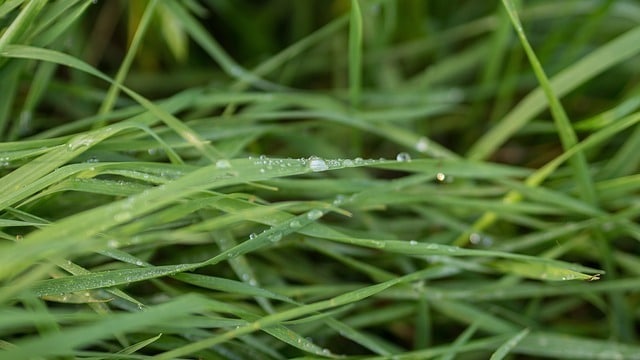There are a ton of ways to dethatch a lawn. You can choose to hire professionals or rake the lawn yourself. Perhaps, you can decide to dethatch the lawn using a mower with an attachment.
Contents
For the purpose of this article, we’ll go with option 3 – dethatch the lawn with a mower attachment. This arguably happens to be less stressful and more efficient than option two, and seemingly cheaper than option one)
What you need:
- A lawnmower (walk-behind mowers).
- Dethatching blade.
- Rakes for a lawn (if your mower has no catcher)
- Bags to collect the grass.
The idea is simple.
Remove the mower blades and replace it with the dethatching blades you just bought. Most of the dethatching blades on the market are meant for mowers with a deck size of 20”. So if you don’t have a mower of that size, you should look for smaller dethatching blades – not too hard to find.
When you’re done mowing, you simply replace the dethatching blades with the regular lawn mower blades and life goes on.
How do you know your lawn needs to be dethatched?

A lawn that needs dethatching isn’t hard to detect. First of all, the lawn becomes spongy to the feet as you walk on it.
This is in contrast with the firmness it’s supposed to feel if there was no buildup of thatch on it.
We suggest walking barefooted to get a better feeling – just for a few minutes.
If your feet feel firm on the ground, then you certainly don’t need to dethatch just yet. So you’re welcome to skip this article. However, if the reverse is the case, and your feet sinks into the grass, then you need to dethatch it as soon as possible.
You can also choose to press the lawn with your hands. If it’s firm and you can’t grab a lot of dead grass off the lawn, then there’s no need for dethatching just yet.
But that’s not all you need to know…
Here is a list of other things you should have in mind.
Lower the height of your lawnmower.
Don’t go to the lowest height possible as this can damage your lawn. Instead, choose a height that can allow the thatch to be removed without harming your grass. For a lawnmower with 10 height levels, level 4 is not a bad idea – apply discretion.
The height of your grass
It is also important to take into consideration the height of your grass. The lower the better for you.
If the lawn needs to be mowed before dethatching, please do as this will help you dethatch properly. Also, don’t leave the grass clippings on the lawn if you intend to dethatch it soon. It might increase your workload when you want to dethatch.
Don’t dethatch a wet lawn
Do not dethatch a wet lawn, because this will stress the lawn and might lead to issues like scarification of the lawn. Wait till your lawn is dry.
Mower With Catcher

If you have a mower with a catcher, the process is made a lot easier because the catcher traps the dethatched grass instead of dumping it back unto the lawn.
In the event that you don’t have a mower with a catcher, then you’ll need to rake the lawn.
You can invest in a rake for dethatching or use a normal rake for his process. Bear in mind that if you are dethatching using a rake, then a dethatching rake is a must-have.
In case you have a flower garden, the mower may be too big a machine to leave the flowers without harm, therefore, you could use a rake or your hands.
How To Dethatch A Lawn With A Mower Attachment
The following is a step by step guide you should follow to dethatch your lawn with a mower.
Change The Mower Blades
We’ve already made mention of this severally. Swap the mower blades with the dethatching blades and you’re good to go. Then, make sure the catcher is attached.
Move The Mower
Start the mower and move it on your lawn. It may take a few passes to and fro, to get a good amount of thatch out of the lawn. If you have a catcher on the mower, fine. If not, then you should ask someone to help you rake up the grass behind you to save time.
Empty the catcher as you go on with your mowing. Don’t forget, thatches can be used as compost assuming the lawn hasn’t been fertilized prior to dethatching.
Bag The Thatch
Gather the thatch into bags and add as much as you can to your compost pile. Dispose of the others off as you wish.
When you’re done dethatching, don’t forget to turn on your sprinklers. The lawn will need a small bath and a few droppings of fertilizer here and there.
That’s all it will take you to dethatch your lawn with a walk-behind mower. If you have a riding mower, the process is almost the same save for the fact that there isn’t a catcher for you.
- Best Ariens Snowblower: How to Сhoose the Right One For You - December 1, 2022
- Best Track Snowblower: How to Choose the Best? - November 29, 2022
- Kentucky Bluegrass vs Perennial Ryegrass - October 7, 2022



Add comment